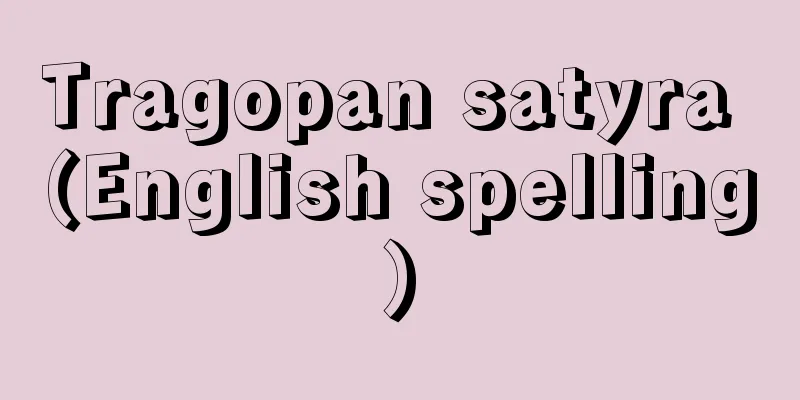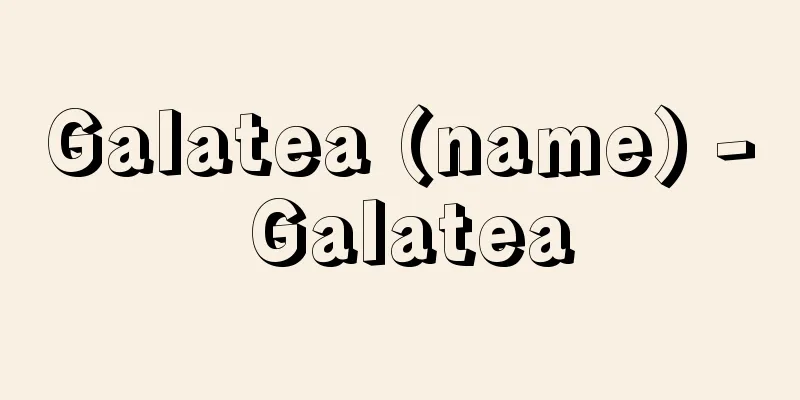Jōkyū War - Jōkyū no ran

|
A civil war in which Emperor Gotoba raised an army to overthrow the Kamakura shogunate, but was defeated. [Masayoshi Kamiyokote] CauseIn 1202 (Kennin 2), Minamoto no Michichika, who had wielded great power in the Imperial Court, died, and the retired Emperor Go-Toba seized real political power. After the death of Shogun (Kamakura Shogun) Minamoto no Yoritomo, Yoriie became Shogun in the shogunate, but in 1203, Hojo Tokimasa and others deposed Yoriie and installed his younger brother Senman as Kamakura Shogun, with Tokimasa becoming regent. The retired emperor adopted a policy of harmony between the Imperial Court and the Shogunate, appointing Senman as Shogun and naming him Sanetomo, and in the following year, 1204 (Genkyu 1), he promoted closer relations between the Imperial Court and the Shogunate, such as by marrying the daughter of his close aide Bomon Nobukiyo to Sanetomo. However, when the retired emperor asked the shogunate through Sanetomo to suspend individual jito (land stewards), the Hojo clan, who were in power as regents, refused, out of a desire to protect their vassals, and so even the relationship between the retired emperor and Sanetomo gradually became less smooth. In particular, after Sanetomo was assassinated in 1219 (Jokyu 1), the retired emperor lost interest in maintaining friendly relations with the shogunate, abandoned his previous policy of harmony between the imperial court and the military, and decided to overthrow the shogunate. The shogunate asked the retired emperor to welcome his son as the Lord of Kamakura, but the retired emperor withheld his reply and instead requested the shogunate to dismiss the land stewards of Nagae and Kurahashi manors in Settsu Province, which were the territories of his favorite Shirabyoshi (traditional Japanese dancer) Kamegiku. The shogunate sent Hojo Tokifusa to Kyoto to reply to the refusal, and also requested that the Kamakura Shogunate be sent east. The retired emperor was opposed to the prince being sent east, but was open to anyone else, even the children of the regent family, being sent east as the Kamakura Shogun. As a result, Yoritsune, then two years old and the son of the Minister of the Left Kujo Michiie, was sent to Kamakura, but this was largely due to the efforts of Saionji Kintsune, Yoritsune's maternal grandfather. Although the retired emperor approved Yoritsune's sending east, he was actually dissatisfied, and wanted the shogunate to collapse, so he began preparations to overthrow the shogunate. [Masayoshi Kamiyokote] ProgressIn April 1221 (Jokyu 3), Emperor Juntoku abdicated to his son Emperor Chukyo and cooperated with his father, the retired Emperor Gotoba, in his plan to overthrow the shogunate. On May 14, the retired emperor gathered troops from the Kinai region and captured Saionji Kintsune, who supported the shogunate, and on the 15th of the following year, he killed Iga Mitsusue, the governor of Kyoto, and issued an imperial decree to pursue and kill the regent Hojo Yoshitoki. Even after Yoritsune left for the east, the de facto Kamakura Shogun was Hojo Masako, Yoritomo's widow, who continued to run the government with the assistance of Yoshitoki. The Shogunate side consolidated their unity around Masako, gathered troops from 15 provinces east of Totomi, and attacked from three roads, with Hojo Yasutoki and Tokifusa as generals on the Tokaido, Takeda Nobumitsu and Ogasawara Nagakiyo as generals on the Tosando, and Hojo Tomotoki and Yuki Tomohiro as generals on the Hokuriku road. On the side of the retired emperor, Miyazaki Sadanori and Kasuya Arihisa were sent to the Hokuriku road, and Ouchi Korenobu and Fujiwara Hideyasu were sent to Mino on the Tosando road, and they fought a defensive battle along the Owari River (Kiso River). When the retired emperors were defeated by the Shogunate forces at the Owari River, the three retired emperors Gotoba, Tsuchimikado, and Juntoku, as well as Emperor Chukyo, went to Mount Hiei to ask for the cooperation of the Enryakuji monks, but were refused, so they returned to the capital and sent their generals to Uji and Seta to mount a final defense. However, the Shogunate forces won the battle on June 13th and 14th, and on the 15th they invaded Kyoto. Thus, about one month after Emperor Gotoba raised his army, the rebellion ended with the defeat of the retired emperors. While the Shogunate side mobilized warriors from the eastern provinces, the retired emperor's side was supported by most of the shugo of the western provinces, excluding Kyushu. However, while the Shogunate forces were organized by province through the shugo under Yasutoki and Tokifusa, the retired emperor's side did not have an established chain of command, and was unable to fully mobilize the samurai of each province, and also failed to secure the participation of most of the temple forces, leading to their defeat. [Masayoshi Kamiyokote] Results and SignificanceThe Shogunate's measures against the rebellion were extremely strict, and they executed Goto Motokiyo, Sasaki Hirotsuna, and other vassals who sided with the retired emperor, as well as Ichijo Nobuyoshi, Fujiwara Mitsuchika, and other close retainers who had masterminded the rebellion. They also had Prince Morisada (Retired Emperor Gotakakura) rule the country from behind the scenes, and enthroned his son Emperor Gohorikawa, dethroning Emperor Chukyo. They also exiled Emperors Gotoba, Juntoku, and Tsuchimikado to Oki, Sado, and Tosa. Hojo Yasutoki and Tokifusa, who led the Shogunate army to Kyoto, remained in the capital and served as Rokuhara Tandai, negotiating with the Imperial Court, leading the vassals of the Western Provinces, maintaining peace in Kyoto and the surrounding area, and conducting trials in the Western Provinces. Over 3,000 territories belonging to the retired Emperor were confiscated and new Jito (land stewards) were appointed to their lands, but most of the confiscated land was in the Western Provinces, and many eastern samurai who had been given reward land moved there, strengthening the Shogunate's power in the Western Provinces, where it had been weak until then. As a result of the rebellion, the Shogunate stabilized its power as a mediator between manor lords (nobles and temples and shrines) and local lords (samurai), and it absorbed functions that had previously been performed by the Insei government, such as dealing with the strong petitions of warrior monks. The defeat of the retired emperor's side was a great shock to the nobility, and the idea that an emperor should also be virtuous arose, and that it was inevitable to defeat an immoral emperor. During this rebellion, the shogunate abolished the emperor and the Chiten no Kimi who ruled from behind the scenes, but this was a temporary measure that only took place after the rebellion, and it was not until the later era of Hojo Tokiyori that the shogunate gained control of the selection of the Chiten no Kimi and the emperor. [Masayoshi Kamiyokote] "Kyoto City, ed.: "History of Kyoto 2" (1971, Gakugei Shorin)" ▽ "Kamiyokote Masataka, "The Kamakura Shogunate and the Court Government" (included in "Iwanami Lecture Series on Japanese History 5", 1975, Iwanami Shoten)" ©Shogakukan "> The Jōkyū War Source: Shogakukan Encyclopedia Nipponica About Encyclopedia Nipponica Information | Legend |
|
後鳥羽上皇(ごとばじょうこう)が鎌倉幕府を討とうとして挙兵し、敗れた内乱。 [上横手雅敬] 原因1202年(建仁2)朝廷で権力を振るっていた源通親(みなもとのみちちか)が没し、後鳥羽上皇が政治の実権を掌握した。幕府では将軍(鎌倉殿)源頼朝(よりとも)の没後、頼家(よりいえ)が将軍となっていたが、1203年、北条時政(ほうじょうときまさ)らは頼家を退け、その弟千幡(せんまん)を鎌倉殿にたて、時政は執権(しっけん)に就任した。上皇は公武融和政策をとり、千幡を将軍に任命、実朝(さねとも)と命名し、翌1204年(元久1)には近臣坊門信清(ぼうもんのぶきよ)の娘を実朝の妻とするなど、公武関係の緊密化を進めた。しかし上皇が実朝を通じて幕府に地頭(じとう)の個別的停止などを求めたのに対し、執権北条氏らは御家人(ごけにん)保護の立場からこれを拒否したりしたため、上皇と実朝の関係までもしだいに円滑を欠くようになった。とくに1219年(承久1)実朝が殺されてのちは、上皇は幕府と友好関係を保つ意欲を失い、従来の公武融和の方針を捨て、討幕を決意した。幕府は上皇の皇子を鎌倉殿として迎えたいと上皇に要請したが、上皇は回答を保留し、寵愛(ちょうあい)する白拍子(しらびょうし)亀菊(かめぎく)の所領、摂津国(せっつのくに)長江(ながえ)・倉橋(くらはし)両荘(しょう)地頭の解任を幕府に要求した。幕府は北条時房(ときふさ)を上洛(じょうらく)させて拒否を回答するとともに、さらに鎌倉殿の東下の実現を求めた。上皇は、皇子の東下には反対であるが、それ以外なら、たとえ摂関家(せっかんけ)の子弟でも、鎌倉殿として東下させてもよいという態度をとった。その結果、左大臣九条道家(くじょうみちいえ)の子で、当時2歳の頼経(よりつね)が鎌倉に下ることになったが、これについては、頼経の外祖父である西園寺公経(さいおんじきんつね)の奔走によるところが大きかった。上皇は頼経の東下を認めたものの、実は不満で、幕府の瓦解(がかい)を望み討幕の準備を進めた。 [上横手雅敬] 経過1221年(承久3)4月、順徳天皇(じゅんとくてんのう)は皇子の仲恭天皇(ちゅうきょうてんのう)に譲位し、父後鳥羽上皇の討幕計画に協力した。5月14日、上皇は畿内(きない)近国の兵を集め、幕府を支持した西園寺公経を捕らえ、翌15日、京都守護伊賀光季(いがみつすえ)を討ち、執権北条義時(よしとき)追討の宣旨(せんじ)を出した。幕府では、頼経が東下してのちも、実質的な鎌倉殿は頼朝の後家の北条政子(まさこ)であり、義時に補佐されて政治を運営していた。幕府側は政子を中心に結束を固め、遠江(とおとうみ)以東15か国の兵を集め、東海道は北条泰時(やすとき)・時房、東山道は武田信光(たけだのぶみつ)・小笠原長清(おがさわらながきよ)、北陸道は北条朝時(ともとき)・結城朝広(ゆうきともひろ)らを大将軍として、三道から攻め上った。上皇方では宮崎定範(みやざきさだのり)・糟屋有久(かすやありひさ)らを北陸道に、大内惟信(おおうちこれのぶ)・藤原秀康(ふじわらのひでやす)らを東山道の美濃(みの)に遣わし、尾張河(おわりがわ)(木曽川(きそがわ))沿岸で防戦した。上皇方が尾張河で幕府軍に敗れると、後鳥羽・土御門(つちみかど)・順徳の3上皇、仲恭天皇は比叡山(ひえいざん)に赴き、延暦寺衆徒(えんりゃくじしゅうと)の協力を求めたが、拒まれて都に戻り、諸将を宇治(うじ)・勢多(せた)に遣わし、最後の防戦を試みた。しかし6月13、14日の戦いで幕府軍は勝ち、15日には京都に攻め入った。こうして後鳥羽上皇の挙兵後、約1か月で乱は上皇方の敗北で終わった。東国武士を動員した幕府方に対して、上皇方には九州を除く西国守護の大半が加わってはいるが、泰時・時房の下に守護を通じて国ごとに御家人を組織した幕府軍に対して、上皇方は指揮系統が確立せず、それぞれの国の御家人を十分に動員しえなかったうえに、寺院勢力の参加もほとんど得られなかったために敗北した。 [上横手雅敬] 結果・意義乱に対する幕府の処置は峻厳(しゅんげん)を極め、後藤基清(ごとうもときよ)・佐々木広綱(ささきひろつな)ら上皇方に加わった御家人、一条信能(いちじょうのぶよし)・藤原光親(みつちか)ら乱を首謀した上皇の近臣を斬罪(ざんざい)に処した。また守貞親王(もりさだしんのう)(後高倉法皇(ごたかくらほうおう))に院政を行わせ、その皇子後堀河天皇(ごほりかわてんのう)を即位させ、仲恭天皇を廃位した。さらに後鳥羽・順徳・土御門上皇を、隠岐(おき)・佐渡(さど)・土佐(とさ)に流した。幕府軍を率いて上洛した北条泰時・時房は都にとどまり、六波羅探題(ろくはらたんだい)として、朝廷との交渉、西国御家人の統率、京都と近辺の治安維持、西国の裁判などにあたることになった。上皇方の所領3000余か所は没収され、その地には新たに地頭が置かれたが、没収地は西国に多く、恩賞地を与えられた多数の東国武士が西国に移住したため、幕府の勢力は、これまで弱体であった西国でも強化されることになった。乱の結果、幕府は、荘園領主(貴族・寺社)と在地領主(武士)との対立を調停する権力として安定し、僧兵の強訴(ごうそ)に対する収拾策などでは、従来院政が行っていた機能を吸収するに至った。上皇方の敗北が貴族に与えた衝撃は大きく、帝王にも徳が必要であり、無道の君は討つのもやむをえないという思想もおこった。この乱で、幕府は天皇や院政を行う治天(ちてん)の君(きみ)を廃立したが、これはこの乱後に限っての臨時措置であり、幕府が治天の君や天皇の選定権を掌握するようになるのは、後年の北条時頼(ときより)の時代からである。 [上横手雅敬] 『京都市編『京都の歴史2』(1971・学芸書林)』▽『上横手雅敬著「鎌倉幕府と公家政権」(『岩波講座 日本歴史5』所収・1975・岩波書店)』 ©Shogakukan"> 承久の乱 出典 小学館 日本大百科全書(ニッポニカ)日本大百科全書(ニッポニカ)について 情報 | 凡例 |
<<: Extinction - shokyo (English spelling)
>>: Salary increase system - shokyuuseido
Recommend
Alcoa - Alcoa (English name) Alcoa Inc.
It is the largest aluminum manufacturing company ...
Thümmig, LP (English spelling) ThummigLP
...This group is made up of disciples who inherit...
Blok (English spelling) Александр Александрович Блок/Aleksandr Aleksandrovich Blok
A poet representing Russian Symbolism. His father...
One hundred steps - Ohyakudo
→ 100-step pilgrimage Source: Shogakukan Encyclop...
Mount Ido
...The mountain range is divided into the Norther...
Magnetic - Jisei
This refers to magnetic properties. When focusing...
Particle size distribution - Ryudobunpu
The ratio of particles belonging to a certain par...
EXIM
…Abbreviated as EXIM, or EIB, it is a government-...
Tsuji Rokurozaemon's petition
This is a draft report by Tsuji Morimitsu, an acco...
Magnat
...The Senate, which, together with the Chamber o...
Representative value - Daihyochi
If you organize given data, such as a record of t...
Yasutane Yoshishige - Yasutane Yoshishige
Year of death: 4th year of the Choho era, October ...
Ergotoxine
A mixture of alkaloids found in ergot. Source: Asa...
The Seven Wonders of Echigo
First, the Seven Wonders were set in remote areas...
Atto (English spelling) atto-
An SI prefix for 10 -18 (one quintillionth) of a u...









